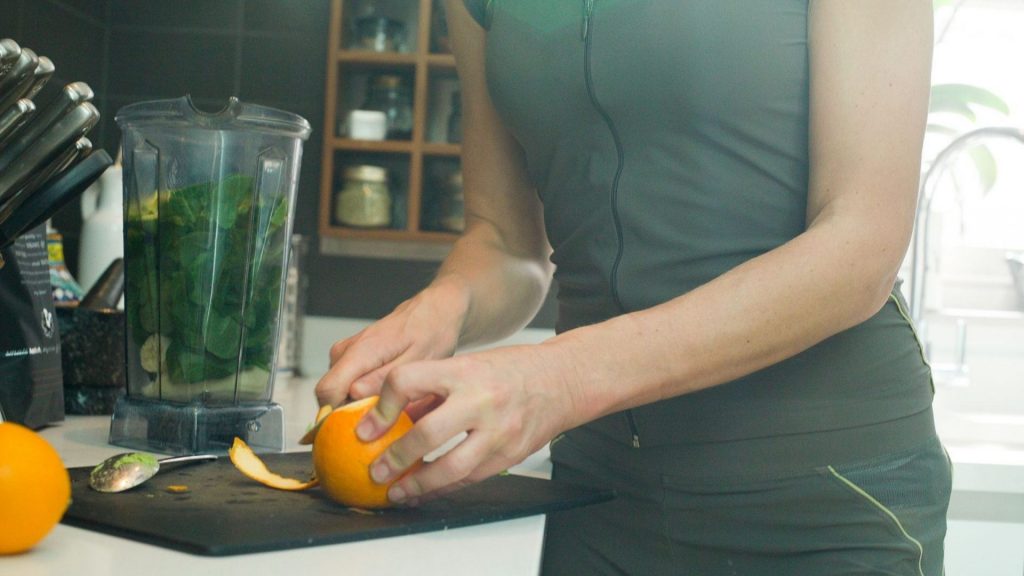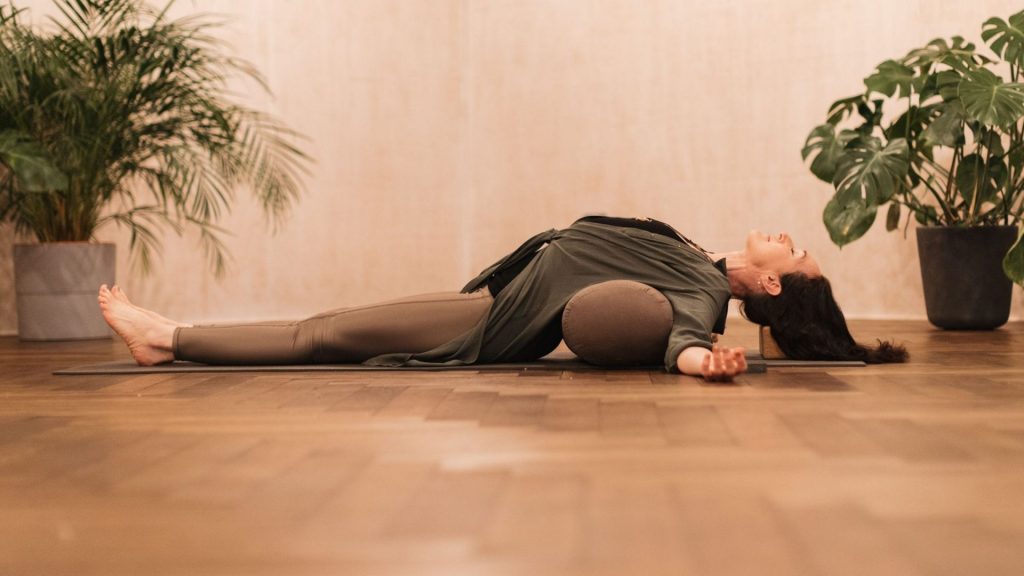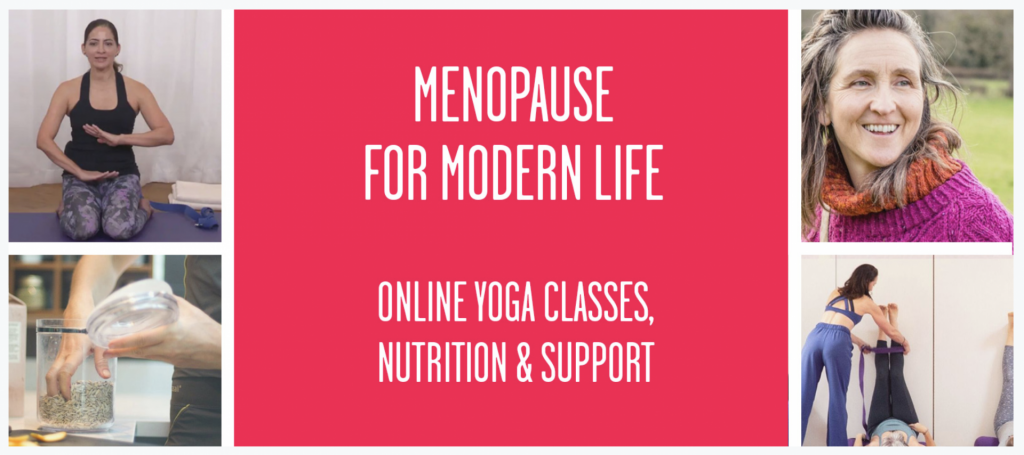
Managing your menopause symptoms
Some menopause symptoms are linked to family history (genetics), and serious illness, but many of the others are due to your own unique body chemistry and your lifestyle. You should always seek medical advice for any health concerns. You can support your endocrine system and smooth your passage through the menopause by looking after your physical and mental health and wellbeing. From the ages of 40-60 your needs are changing, in addition to altering your nutrition and supporting your body with vitamins and minerals, you also need to learn to manage stress, take the right kinds of exercise, and choose to take a positive perspective on your menopausal years.
Nutrition
Your body always benefits from a healthy balanced diet, but there are essential nutrients that you need at this stage of life and there are foods and drinks to avoid – such as coffee, alcohol, refined sugars – and foods that will support your digestion, skin and bone health.
To help prevent the loss of bone mineral density, you can increase your intake of calcium-rich foods, as well as vitamins B, D and K to help with calcium absorption. Nutritionists advise eating protein at every meal (including vegetarian forms of protein). Digestion can become sluggish in the menopause, so you can feed your microbiome by including gut-friendly enzymes in your diet, such as kefir (dairy, water-based, or soy versions), kimchi-fermented vegetables, and dark berries, nuts and seeds that feed the gut microbes. Increasing your consumption of green leaf vegetables, flaxseeds and staying hydrated will also boost your digestion.

Chronic stress
Stress and negative thoughts trigger and exacerbate some of the menopause symptoms, such as hot flushes, anxiety, insomnia, menorage, and stress depletes bone calcium). Clinical trials of paused breathing techniques and CBT exercises to change your perception of your menopause symptoms has proven to be effective. Learning to calm your nervous system and self soothe will help you to manage these symptoms and improve your long-term health.
Exercise
Muscle mass depletes in the menopause but our musculature is needed to support our skeletal structure and prevent falls that can lead to bone fractures. Bone Mineral Density (BMD) declines rapidly after menopause, unless a woman takes HRT. Throughout your menopause journey you need to maintain your muscle mass, bone density and heart health by including cardiovascular exercise and weight bearing exercise. However, this needs to be proportionate to your body’s needs and your energy levels. Overdoing exercise will be counterproductive. Pushing and powering through your perimenopause and menopause when you are likely to feel fatigued will only cause more mental stress, which will counteract the benefits of exercise.
- Cardiovascular exercise that involves raising your heart rate and involves some jumping, jogging or weight bearing on your joints for 30 minutes a day supports both your heart and your bone strength.
- Using weights can help you maintain muscle tone and strength, which both decrease in post menopause as your oestrogen drops.
- Somatic movement and myofascial release can help relieve muscle and joint pain, such as frozen shoulder and lower back pain, which are common in perimenopause. This pain is linked to stress and low oestrogen that causes inflammation and dehydration in the fascia, which dries up and tightens around muscles leading to pain and limited mobility. Staying hydrated and including somatic movement and yoga can keep the fascia lubricated, supple and mobile. Somatic movement also helps develop interoception – and mind-body awareness of your body’s internal sensations. Learning to listen to what our body needs is vital as we move through our menopause. (Read more about how Yoga can support you through Menopause)
- Qigong and Tai chi help develop mobility, fluidity and are accessible forms of exercise, even when your energy is low. Practised under the expert tuition of teachers such as Mimi Kuo Deemer, qigong can support your mental and physical health and guide you through the menopause to Second Spring.
- Swimming – Women with muscle and joint pain can find it easier to stretch and exercise with the support of water. Swimming also develops your ability to deepen your breath and exhale slowly, which calms the nervous system. Cold water swimming can stimulate and invigorate, and also help your mental health. Research has shown that even swimming in cold water for 5-10 minutes can calm anxiety and lift a low mood. Outdoor swimming has the added benefit of taking you out into nature to appreciate the world around you.
- Yoga and movement – there are many different styles of yoga which each have valuable benefits.
How can yoga help?

Yoga can improve many of the menopause symptoms with physical, emotional and psychological benefits. But don’t take my word for it; this is the opinion of Dr Louise Newson – menopause specialist and founder of Newson Health Menopause & Wellbeing Centre, who I work with delivering workshops, retreats and the MY teacher training course. She prescribes HRT and also practices yoga to manage her symptoms and wellbeing.
“Yoga is a fantastic exercise for the entire body. It can improve some of the symptoms of the menopause, including sleep disturbance, fatigue, low mood, and anxiety.
Our muscle tone and bone density reduce during menopause so doing yoga regularly can be beneficial for those. Some women find it helps to reduce hot flushes too.
Regular yoga practice can help strengthen muscles, improve flexibility, and reduce aches and pains, and can also relive stress and anxiety. Core muscle strength improves including pelvic floor muscles, which often weaken as our hormone levels reduce. Yoga controls breathing, which can then reduce anxiety levels. Controlling our breathing and doing a powerful practice can work to clear our bodies of negative feelings and thoughts.”
Your yoga practice
However, it is important to practice in a style that supports your needs. Hatha yoga can maintain flexibility, overall strength and balance (vital for preventing falls and bone fractures in post menopause), and the breathing and meditation techniques can help you to manage stress and mental health.
Yoga to suit your needs
Practising hot yoga when you are having hot flushes or menopause rage will be too overheating in perimenopause and can cause other symptoms linked to dehydration. Similarly, it is wiser to practice Ashtanga yoga when you are not mentally and physically exhausted. Yin yoga can help rebalance energies within your body, and improve your emotional state of mind, but will not give you the cardio-vascular workout needed to maintain heart health. Practising only restorative yoga will help you manage stress and fatigue, but will not improve your bone and muscle strength. Geeta Iyengar, author of ‘Yoga: a Gem for Women,’ advises women to practice yoga throughout every stage of life, but to adapt this practice during the menopause transition to alleviate specific symptoms: calming the nervous system, balancing the endocrine system and ‘cooling a hot head.’
How do you know what yoga to practice and when? You need to learn to recognise your symptoms, become attuned to your physical and psychological needs and understand that these will change as you transition through the stage of the menopause. Learn to listen to what your body says it needs, and give yourself permission to follow this wisdom. Developing this deeper communication with yourself is the most empowering practice of all.
On the MFML course, you can try out many different styles of yoga and movement, including dynamic vinyasa style classes, Nidra and restorative yoga, meditation, somatic movement, qigong and Menopause Yoga.
Menopause Yoga
On the MFML course you can try out four of my Menopause Yoga classes and there are blogs about each of these classes and groups of symptoms.
Menopause Yoga aims to educate and empower you to embrace the menopause as an opportunity for self-growth.
The MFML course includes specialist classes for the 4 main groups of symptoms, with a toolkit of yoga, breathwork and meditation techniques that you can dip into whenever you need. There are techniques for reducing hot flushes, menopause rage and irritability, anxiety and overwhelm, low mood and lethargy. Each of these classes offer breathing and meditation techniques for cooling, calming or reenergising, with simple warm up stretches, yoga poses, restorative relaxation and end with a meditation or guided visualisation. I recommend that you read the blog posts linked to these classes so that you can complete the practice with some Journal writing or self-reflection that will help you to develop insight into your own symptoms – and reveal the wisdom that is part of the menopause.
Seasons and the Cycle of Life
Yoga philosophy also helps us to recognise the impermanent nature of life – that we, and the world around us, are constantly changing, not static. We can view the hormonal changes in our bodies as being part of this natural flow and the cycle of life. If we resists these changes, it causes more emotional and physical friction, muscular tension and potentially more heat related symptoms such as hot flushes and stress related inflammation. If we relax into the process of change, befriend our feelings and show compassion to our morphing bodies, then we are likely to have a smoother ride and gain some fascinating insights along the. To paraphrase the ancient Greek philosopher Aristotle, this is an opportunity to deepen the most important relationship in your life – the relationship with yourself.
Vitamins & Natural Remedies
You can also manage your symptoms through natural remedies such as herbal remedies, vitamin supplements and aromatherapy oils.

Hot Flushes
Herbal Remedies | red clover, black cohosh (this can interfere with other medication so always check with your doctor), sage, liquorice root, wild yam extract, grapeseed.
Aromatherapy | clary sage, sweet fennel, peppermint essential oils.
Mood swings and depression
Vitamin Supplements | magnesium citrate supplements, omega-3 fatty acids.
Herbal Remedies | St John’s wort, evening primrose oil, lemon balm, oat straw.
Aromatherapy | geranium, frankincense, bergamot.
Anxiety
Vitamin supplements | magnesium, vitamin D, vitamin E and evening primrose oil.
Herbal remedies | camomile, valerian, lemon balm, lavender, skullcap.
Aromatherapy | geranium, rose, bergamot, and cypress.
Fatigue and insomnia
Vitamin Supplements | iron supplements.
Herbal Remedies | maca powder, liquorice and mint tea and at night drink camomile and valerian tea.
Aromatherapy | bergamot and lavender oils.
Brain fog
Vitamin Supplements | B multi vitamins, especially B12
Herbal Remedies | rosemary tea, peppermint and liquorice.
Aromatherapy | bergamot.
Joint pain
Vitamin Supplements | magnesium.
Herbal Remedies | turmeric (fresh or capsules), red clover, CBD oil, dandelion root.
Aromatherapy | clary sage, rosemary, lemongrass.
Energy
Herbal Remedies | ginseng, ginger, maca.
Sleep
Vitamin Supplements | magnesium.
Herbal Remedies | valerian, camomile.
Aromatherapy | lavender.
Digestion
Vitamin Supplements | acidophilus
Herbal Remedies | camomile, peppermint, valerian, dandelion root, mint, fennel, liquorice,
Aromatherapy | sweet fennel, clary sage, mint massage oil.
Sex and Libido
Low oestrogen causes vaginal atrophy which makes penetrative sex less stimulating and can cause painful skin abrasion. Low testosterone can also affect our levels of libido.
Herbal remedies | chaste tree, maca powder.Aromatherapy – ylang ylang, clary sage.
Aromatherapy | ylang ylang, clary sage.
Hormone replacement therapy (HRT)
HRT can improve your mood and support bone, heart and vaginal health. It can reduce hot flushes and night sweats and as a result improve sleep.
There are different types of HRT:
- Combined Oestrogen and Progesterone for women who have a womb.
- Oestrogen only for women who do not have a womb.
Older types of HRT were made from pregnant horses’ urine. Modern forms of HRT are derived from the wild yam root vegetable.
There are two main types:
- Body Identical – this is regulated in the UK by the Medicines Health Regulatory Authority (MHRA) and available on the NHS and from private doctors. It is called body identical because it is indistinguishable from the hormones naturally produced in a woman’s body.
- Bio Identical – this is formulated from compound hormones that are not regulated by the MHRA. This is only available through private clinics and is said to be custom-made using salivary hormone tests. The British Menopause Society [1]does not recommend that women take this version because it is not regulated or proven to be effective.
Patches, pills and gels
Research has shown that there is a lower risk of blood clots if HRT is absorbed through the skin as a patch or a gel and a spray. The combined patches include both oestrogen and progesterone, however, you can also take these hormones separately. There is a body-identical oestrogen gel, patch and spray. There are also oestrogen implants which are inserted underneath the skin and are a higher dose of oestrogen than other forms of HRT.
Local vaginal oestrogel is effective in alleviating symptoms of vaginal dryness and painful sexual intercourse. It is localised and lower strength than other forms of HRT so it only affects the vagina.
Progesterone can be taken as part of a combined HRT patch, or as a pill or coil.
Micronised progesterone is the newest Body Identical form which is deemed safer than previous synthetic versions. Micronised just means that the molecules are so small, it is easier to digest and absorb. The Mirena coil is a synthetic version of progestogen and is also a form of contraception.
Testosterone is relatively new in its use in the UK and may be prescribe by doctors for fatigue, low mood and low libido.
Visit the Newson Health website for more detailed information about the types of HRT available in the UK. The website Women’s Health Concern also has factual information that is helpful.
HRT can be part of your holistic approach to managing the menopause symptoms and long -term health risks, and combined with the other ‘natural’ solutions listed below. However, this has to be your personal decision taken with your doctor.
[1] BMW website https://thebms.org.uk/publications/consensus-statements/bioidentical-hrt/







Leave a Reply